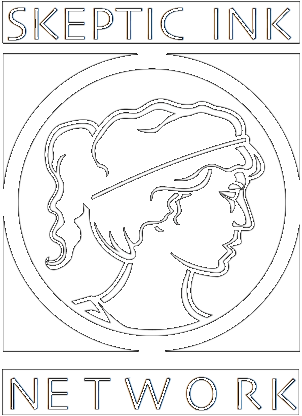(Submitted by Skepticality listener Rich Catalano)
I am an English teacher in Japan. I have used a variety of ESL textbooks over the years, but this year caused a stir. Why?
In one of the stock images, I appear in the background. I checked, and this particular photograph was from Getty Images, a famous stock-image company. The setting is a museum, and it shows two people looking at an unseen piece. I am in the background, alone, looking at a different piece. It is obvious that I am not the focus of the photograph, so perhaps I was captured inadvertently.
I showed this photo to everyone who knows me, including my ever-doubting wife, and they all concur that the image is me.
In the past, I went to Europe every summer with a group of students and always visited museums. Perhaps this is when the photo was taken.
Not sure if the odds are against this, but they seem to be.
Below are the extended notes for use in Skepticality Episode 240 provided Edward Clint. Clint produces the Skeptic Ink Network and writes about Evolutionary Psychology, critical thinking and more at his blog Incredulous. He is presently a bioanthropology graduate student at UCLA studying evolutionary psychology. Take a look and leave your comments below. Also, please be sure to listen to the podcast for our own hilarious commentary.
Rarely can someone say that they have a “background in teaching ESL” and mean it so literally. The odds must be astronomical. No, probably worse than that, because the odds of liking astronomy are pretty good. Who doesn’t want to tool around the universe in a giant chrome leech with Neil deGrasse Tyson? When scientifically analyzing likelihood in questions such as this, we separate the larger question into two smaller ones termed the “boring part” and the “interesting part”. It’s a Bayesian method. Probably. Anyway, the comparatively boring part is how likely is it you’d wind up in a stock photo in the Getty Images library? Or, not just Getty but any similar image supplier? For a world-trotting agorafile like you, maybe not as bad as you think. The top eight such services have a combined 155 million images. There is a constant demand for new images, and every day thousands of these get sold to hundreds of clients from cable news networks to product catalogs. Not all of those 155 million images are photos of people, but your odds of being in there are higher if you are a in a labcoat holding a clipboard, like to stand in front of a lot of sunsets, or, in this case, were looking at one of those dumb Louvre statues that doesn’t even have arms.
The more interesting part is, what are the chances that image would find you once it was in the Getty bank, and in a textbook you’re teaching from? Unless you’ve been doing this job for 60 years, probably on the low side. On the other hand, our increasingly visual media-rich global culture might be making this sort of thing more common. Just two weeks ago The Nation website reported a math textbook in Thailand had to have its cover changed because the bespectacled professional woman center frame is Japanese adult cinema actress Mana Aoki. You and Ms. Aoki have something in common: your images might have been sold or used dozens or hundreds of times by now. Plus you’re both apparently highly recognizable by a small set of Japanese people. That’s a feather in your cap.

